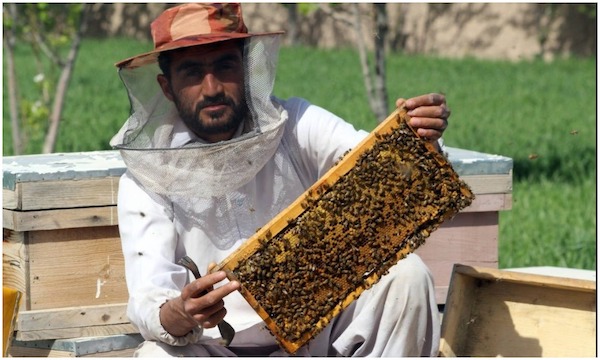The UN General Assembly has designated May 20 as World Bee Day to raise awareness of the importance of bees, support for beekeeping and the effects of bee pollination on sustainable development of agriculture and food supply.

According to the UN, bees are under threat. Present species extinction rates are 100 to 1,000 times higher than normal due to human impacts.
Close to 35 percent of invertebrate pollinators, particularly bees and butterflies, and about 17 percent of vertebrate pollinators, such as bats, face extinction globally.
If this trend continues, nutritious crops, such as fruits, nuts and many vegetable crops will be substituted increasingly by staple crops like rice, corn and potatoes, eventually resulting in an imbalanced diet.
But government, farmers and ordinary citizens can play their part to make sure bees do not become extinct.
Individually people can plant a diverse set of native plants, which flower at different times of the year; buying raw honey from local farmers; buying products from sustainable agricultural practices; avoiding pesticides, fungicides or herbicides in our gardens; protect wild bee colonies when possible; make a bee water fountain by leaving a water bowl outside; and raising awareness by sharing this information within our communities and networks.
Beekeepers and farmers can also help by reducing, or changing the usage of pesticides; diversifying crops as much as possible, and/or planting attractive crops around the field.
Governments in turn can strengthen the participation of local communities in decision-making, in particular that of indigenous people, who know and respect ecosystems and biodiversity; enforcing strategic measures, including monetary incentives to help change; increasing collaboration between national and international organizations, organizations and academic and research networks to monitor and evaluate pollination services.
The number of beekeepers have meanwhile grown in Afghanistan over the past few years and today local honey production exceeds the two metric ton mark.
Akbar Rustami, director of information and spokesman for the Ministry of Agriculture, Irrigation and Livestock (MAIL), said recently that honey production reached 2,490 metric tons in Afghanistan last solar year.
According to Rustami, Paktia topped the list with 899 tons of honey, followed by Nangarhar with 500 tons and Khost with 416 tons, which are the most important honey producers in the country. Herat, Laghman, Badakhshan, Kunduz and Bamyan are also on the list of major honey producing provinces.
Rustami said recently that there are currently 6,757 large and small beekeeping farms across the country, most of them in Badghis, Herat, Badakhshan, Paktia, Kunduz, Daikundi, Bamyan, Logar, Sar-e-Pul, Farah, Maidan Wardak, Kapisa, Takhar, Baghlan and Khost provinces.
Rustami said that Badghis with 722, Herat with 593, Paktia with 550 and Badakhshan with 526 beekeeping farms are at the top of the beekeeping table.
Beekeeping is growing as a lucrative business and its products have a good domestic and foreign market.
One kilo of pure honey is sold in the domestic market from 500 to two thousand afghanis, depending on its type.
Meanwhile, the amount of honey production in 1398 had reached two thousand and one hundred tons, and this figure has increased by 390 tons in the past year.
LINK: https://www.ansarpress.com/english/22430
TAGS:






























 South Korea may punish Tesla
South Korea may punish Tesla 




